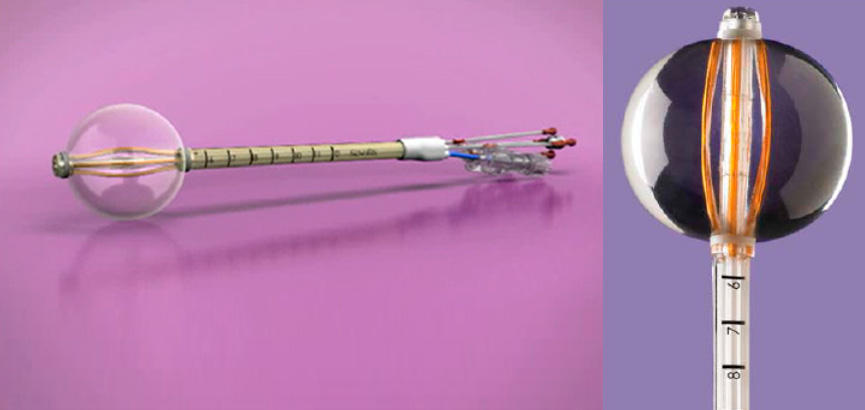Contura
Accelerated Partial Breast Irradiation with the CONTURA® MLB Catheter
What is the CONTURA® MLB Catheter?
CONTURA is a catheter used to deliver High Dose-Rate (HDR) Brachytherapy to the breast after surgery to remove the primary tumor, using a balloon catheter at the site of the lumpectomy. CONTURA has a special vacuum-like feature that gently pulls tissue into contact with the balloon surface in order to improve radiation delivery to the surgery area.

How does it work?
After the tumor has been removed, a small, Contura balloon catheter is placed inside the lumpectomy cavity through a small incision in the breast. The balloon is “inflated” with salt water solution so that it fits snugly inside the cavity, where it will remain inflated for the duration of the five day treatment.
During treatment, the portion of the Contura catheter that remains outside the breast is connected to a computerized machine that delivers radiation using a single radioactive source inserted into the catheter at multiple positions within the balloon for various lengths of time to treat the lumpectomy cavity.
What to expect
Treatments will be completed twice a day, six hours apart, for five days. After each treatment is completed, there is no radioactive material within the breast. Patients are able to return to their normal daily activity, with no hospital stay required.
No radiation will remain inside the breast between treatments, and after all radiation treatment is completed, the Contura balloon catheter is deflated and gently removed through the same incision made to place it in.
Patient Benefits
- CONTURA places radiation inside the space left when a tumor is removed through a lumpectomy, so radiation is targeted to the area where cancer would be most likely to recur (without further treatment).
- Radiation is delivered from within the cavity, limiting the amount of radiation to healthy surrounding tissue, reducing the risk of potential side effects common to radiation therapy.
- Completed in five days in an outpatient setting, so patients spend less time in the hospital and more time getting back to daily activities.




